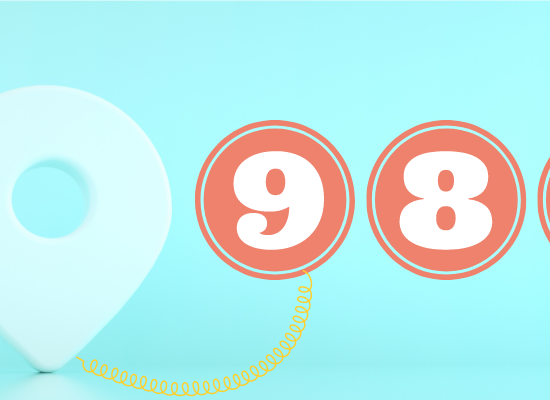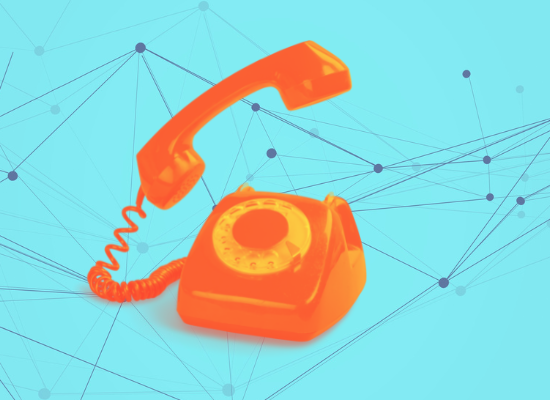
Stephanie Hepburn is a writer in New Orleans. She is the editor in chief of #CrisisTalk. You can reach her at .
On Thursday, the FCC voted to formally make 988 the nationwide number for mental health and suicide crisis, adopting rules that require all phone service carriers to start directing 988 calls to the existing SAMHSA-funded National Suicide Prevention Lifeline (1-800-273-TALK | (1-800-273-8255) by July 16, 2022. Ajit Pai, FCC chairman, said that the transition period will give phone providers time to make any necessary network changes and allow Congress, federal agencies, and local call centers to prepare for an increase in call and chat volume, which experts estimate will rise at least twofold from over 2.2 million callers to more than 4.4. House Representative Chris Stewart (R-UT), applauds the FCC’s steps toward making 988 the number for psychiatric emergencies a reality, saying, “The FCC’s announcement is something that we’ve worked very hard for over the last four years. This makes essential and critical mental health resources more easily accessible. We are not exaggerating when we say that this hotline will save lives.”
As we prepare for the fifth month of the COVID-19 pandemic, the FCC-designated 988 number for suicide prevention and mental health crisis is more dire than ever. Before the pandemic, suicide had been on the rise in the United States. It’s the 10th leading cause of death for Americans overall and the 2nd leading cause of death for people ages 10-34. Particularly vulnerable populations are veterans, LGBTQ youth, and non-Hispanic American Indian or Alaska Native (AIAN), and Black adolescents who self-reported suicide attempts rose by 73% between 1991 and 2017. It’s not clear how the pandemic will impact the 2020 suicide rate, but some communities have experienced a stark rise in crisis calls. For example, the number of calls to Colorado Crisis Services spiked nearly 48% in March and April compared to the same months last year, with most callers seeking assistance for anxiety, depression, and suicidal ideation.
Hannah Collins, senior marketing and communications manager at the Lifeline, says that while the call volume at the Lifeline itself remains within typical range, callers do often share context related to the virus. This includes fear of exposure, including that of themselves or a loved one, hospitalization, or death of a loved one from the virus. Also, she points out that needs vary per community. “The Lifeline is a national network of locally operated crisis centers, and most of them answer state and local crisis lines in addition to answering Lifeline calls. Centers’ individual experiences of call volume may differ when taking into account their additional services.”
Where there has been an increase in calls, says Collins, is to the Disaster Distress Helpline (DDH), a sub-network of the Lifeline that focuses on providing emotional support to people impacted by disasters. At the beginning of the pandemic, calls went from about 40 or 50 a day to just over 600 at their highest, one day in late March. April saw steady numbers mostly within the 400-550 range, and in June, the hotline experienced fewer calls but still a 697% increase in call volume compared to the same month last year. Collins notes that while the Lifeline can’t be sure of the exact number of DDH calls and texts related explicitly to the COVID-19 pandemic, helpline counselors report that callers are expressing isolation from “being cut off from social supports, limited access to care, and canceled milestone events.” Callers are also sharing concerns around financial stability and managing the stress of work-life balance and homeschooling. The virus itself is a source of distress and anxiety for callers, particularly, says Collins, among people who work in healthcare. “We estimate that around 7.5% of DDH calls and texts are from healthcare workers.”
Why callers may reach out to a disaster distress line instead of the Lifeline is multifold. Jeannette David, the disaster mental health coordinator at Georgia’s Department of Behavioral Health and Developmental Disabilities (DBHDD), told us in April that among the reasons are stigma, marketing, and how people view themselves. She said that “in the wake of a disaster, many people are more apt to call a disaster distress or emotional support line than one with the words suicide or mental health in it.” Furthermore, people can’t reach out to a number or chat that they don’t recall or know. Misha Kessler shared with us last year that when he experienced a suicidal crisis, his therapist wasn’t returning his calls. She didn’t call him back until six days later. He didn’t know where to find help except walk to the nearby hospital where he stayed for two days in inpatient psychiatric hospitalization. Misha hadn’t known there was a crisis number he could call. The three-digit number 988 is easy to remember, and with adequate marketing could mirror for mental health, substance use, and suicide crisis, what 911 is for medical emergencies.
Among Congress, there has been a significant bipartisan effort to pass legislation to support the adoption and implementation of 988. In 2018, Congress passed the National Suicide Hotline Improvement Act (H.R.2345), tasking the FCC, in consultation with SAMHSA and the Department of Veterans Affairs (VA), with looking into an easy-to-remember, 3-digit dialing code for mental health and suicide crisis. The FCC did a feasibility analysis on the optimal three-digit number to use for Americans in crisis to have fast access to life-saving resources, consulting with the North American Numbering Council (NANC) and reviewing reports from SAMHSA and the VA. In 2019, the FCC determined 988 to be the ideal number.
While there’s symbolism in having a 911 counterpart for mental health and suicide crisis, and it’s easy to remember, 988 also creates a much-needed shift in how we perceive crises that could foster real equality. Dr. Draper, project director of the Lifeline, told us last year that implementing a three-digit number for psychiatric crises will have a snowball effect that would result in vital data to understand, interpret, and improve services based on caller expectations and corresponding policy shifts to meet people’s needs. It would also make call centers’ contributions more visible, putting it on par with 911 emergency supports like emergency medical services.
Senator Cory Gardner (R-CO) shares these sentiments and says that establishing 988 is a top priority for him, pointing out rising suicide rates in Colorado, which is why he’s led the charge in the Senate to move the bill forward. As previously mentioned, during COVID-19, the number of calls to the mental health crisis line in Colorado has spiked, with 60 percent of calls relating to the pandemic. “I’ve held countless meetings and roundtables with families, students, mental health care professionals, law enforcement officials, and others to address our state’s mental health needs. The tragic fact is, we lose a Coloradan to death by suicide on average every seven hours, and we must keep fighting to provide mental health support to Coloradans in need, particularly in this time of crisis.”
The senator notes that while the FCC moving forward with 988 is essential, so is the National Suicide Hotline Designation Act of 2020 becoming law. The FCC has included in its reporting that the estimated $50 million needed in additional annual funding to support the call centers “would be covered by federal, state, and local governments.” The calculation is based on call growth projections of what Lifeline member call centers would need today (sans ongoing pandemic). The Lifeline’s call volume has grown roughly 15 percent each year since it launched in 2005. The $50 million in additional funding doesn’t include the anticipated twofold or more increase of calls 988 will receive, nor, of course, the unanticipated calls arising from the pandemic. Sue Ann O’Brien, LPC, MBA, CEO of Behavioral Health Link, testified before the United States House of Representatives Committee on Energy and Commerce’s Communications and Technology Subcommittee in February that implementation of 988 will need a braided funding approach that includes a “mix of state, and local dollars.” She says it must also involve giving states the authority to levy fees such as service charge revenue through wireless carriers. “What is important to note is that it will need all of these funding streams, or there will not be sufficient infrastructure and capacity to answer the increased call volume from 988.”
The Senate National Suicide Hotline Designation Act of 2020 (S. 2661) to establish 988 as the national suicide prevention and mental health crisis hotline was sponsored by Sen. Gardner and 34 cosponsors and passed unanimously in the Senate on May 13, 2020, but the House has not yet considered the bill. As we head into an August recess that will be followed by a presidential election season, supporters say the House must move forward with a vote. “This three-digit number would make it easier for Americans dealing with a mental health crisis to receive life-saving support. I will continue to push Congress to create this three-digit hotline because too many people are suffering and don’t know where to turn to for help.”









